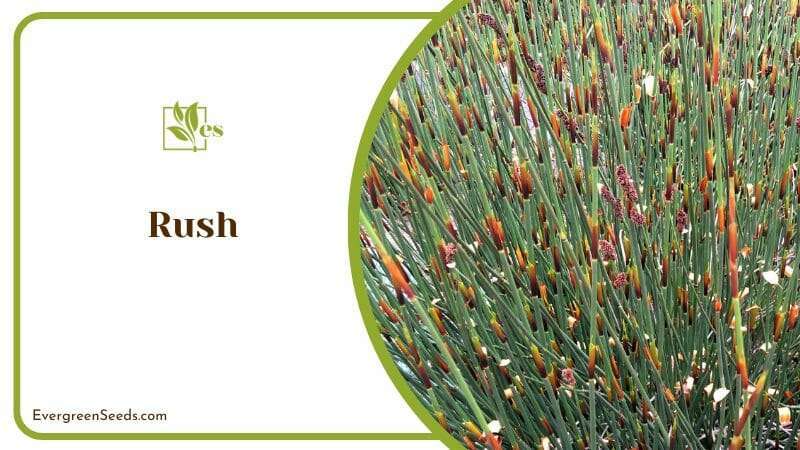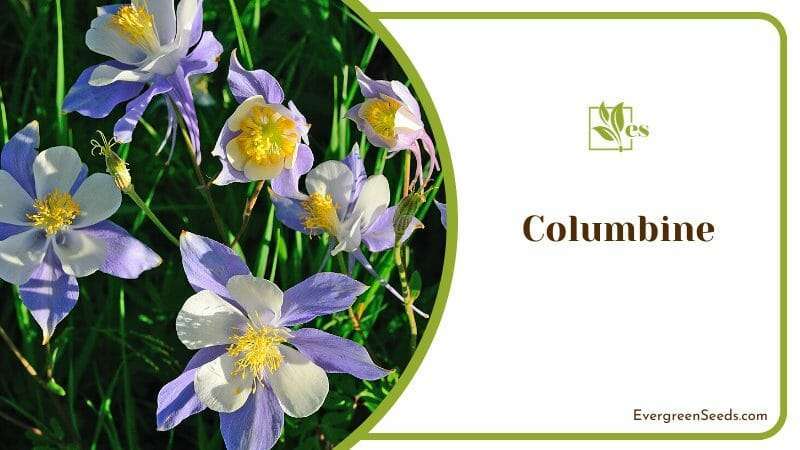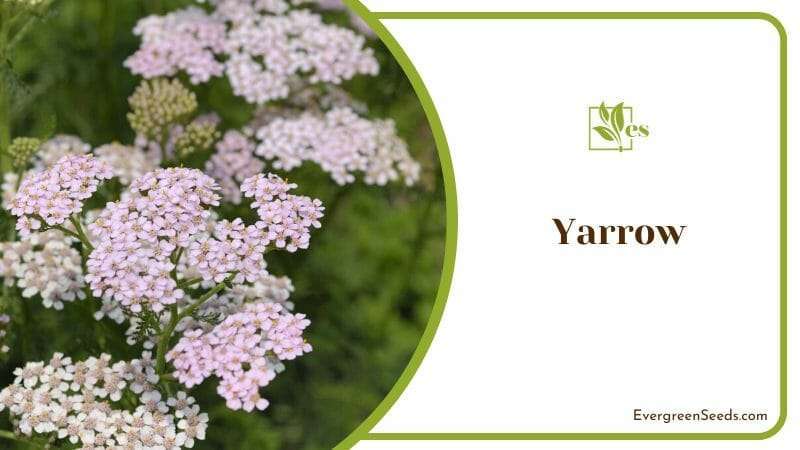With liriope of the Asparagaceae family, companion plants are a must to complement this lovely perennial plant.

Also known as lily turf or monkey grass, its two main species such as Liriope Muscari and Liriope Spicata are the perfect fully hardy, perennial landscaping plants producing the most amazing flowers to complement your summer garden! Liriope genus plants will also appreciate a companion plant (or two) to accentuate their green and blue colors.
Whether you’re thinking of another bushy green, a lovely forest bed, or a dreamy forest-like scenery, you will absolutely love these 20 recommendations.
“Companion planting can help to deter pests and attract beneficial insects.”University of Maryland Extension
JUMP TO TOPIC
Liriope Companion Plants List
1. Geraniums
Now here’s a beauty requiring low maintenance. Geraniums love full sun but can perform in the partial shade next to your lily turf. Geranium plant care will be a breeze – no pests or insects are troubling them, and they will even attract butterflies to the garden! Geraniums are doing best when living in zone 10 and 11 where they can exist as perennials.

Although there are both annual and perennial kinds of geranium plants, liriope and geraniums come from the same family of plants, making them an ideal match. These two live in perfect synergy, adding a whole spectrum of greens to your garden. Geraniums will also add a vibrancy of color when in bloom.
2. Hard Ferns
If you’re into adding a bit of good old prehistoric kick to your garden, hard ferns are your companion plant of choice. They have outlived a lot of organisms, unsurprisingly having no pest problems, and are extremely low maintenance. They even withstand extremes of zones two and 10.

You should opt to plant liriope in airy soil, but the thirsty fern will take care of extra aeration. Hard ferns such as Blechnum spicant or Blue Star fern will add a bit of contrast with their texture and structure, making liriope stand out with its flowers in the summer.
3. Blue Fescue
Blue fescue is the most adorable bushy evergreen plant valued for its bluish-green hues. It likes airy, rocky beds and will thrive in poorly fed, sunny, and semi-shaded areas. These adaptable ornamental grasses will add this striking blue complement to the green of liriope.

They make for a lovely background companion plant, making the liriope stand out. Let them grow aggressively for a more wild-like scenery. Blue fescue does best in zones four to eight.
4. Sedge
Sedge is another member of ornamental grasses coming from Carex family. Carex companion plants are strikingly similar to liriope Muscari. However, they don’t produce flowers.

These make for great ground covers, providing patches of green even in the most barren places of gardens. Be mindful of the zone you plant them in, as their range is somewhat small – from zone seven to nine.
Any plant from carex companion plants family will fit in between your liriope perfectly, making the scenery luscious and full.
5. Spotted Deadnettle
Spotted Deadnettle comes from a family of uniquely beautiful and handy ground covers, adaptable to almost any situation and place in your garden. As far as plant care goes, it’s simple as can be.

Deadnettle thrives in neglected areas, and although it loves getting water occasionally, it will tolerate prolonged dry periods. Deadnettle is also hardy concerning climate, withstanding zones three to eight.
There are several varieties of spotted deadnettle, all with a slender, mint-like body producing an array of colorful flowers, making them perfect companions for liriope.
6. Rush
Rush is an alternative to sedge but with sturdier, much more “meaty” leaves. Unlike sedge, they bore beautiful brown flowers throughout the summer. As for the plant care of rush, they love the full sun and plenty of water. They don’t have any insects or pest trouble, and as long as you can provide a wet area of habitat is low maintenance. Rushes will tolerate the weather of zones four to 10.

These will be ideal liriope companion plants, especially if you have a waterbed or a pond nearby – they will add a lovely feature above it. The only downside is that they’re slow growers and will take some time to spread.
7. Lungwort
Lungwort companion plants are ideal to be planted next to lily turf. This perennial grows in clumps and produces amazing bluish flowers. This small plant will make it seem as if you’re growing a smaller version of liriope, making a great ground cover for it. Just like liriope, they enjoy rich but airy soil and will enjoy the partial shade.

Plant care-wise lungwort companion plants are resistant to most pests and require no major work. These will be winter hardy in zones four to eight.
8. Painted Trillium
Painted trillium or Trillium undulatum is the “star of the show” and a perfect flower bed companion for liriope. This beautiful green perennial produces three blue-green bulbous leaves, sporting a beautiful three-white-petal flower. Each petal has a couple of subtle carmine stripes and is breathtakingly beautiful.

Trilliums, however, go dormant in the middle of the summer – exactly why they are a nice pair for lily turf, which can take over the scene for the rest of the season. They will tolerate zones four to eight.
9. Lamium
Lamium is another nettle-like companion plant to liriope – they both thrive in partial shade, enjoying somewhat airy, dry soils with lots of oxygen. Lamium is a pest and predator-resistant, disease-free plant. Lamium does well in zones four to eight, while in zones six to eight, it can be grown as an evergreen.

A worthy addition to your liriope, here’s an attractive grower with tiny pink and purple flowers which doesn’t mind being neglected – ideal for a beginner gardener.
10. Spiderwort
Spiderwort companion plants are ideal for liriope, as they bear high narrow leaves matching those of liriope. The Virginia spiderwort will also sport purple and blue flowers. Their flowers will often last for only a day, but there’s plenty of them to enjoy. You’re left with great bushes of green that will accompany lily turf brilliantly.

Spiderwort companion plants thrive in semi-dry soil and in partial shade, which makes them all the more similar to liriope. As far as the hardiness goes, this perennial will enjoy zones four through nine.
11. Hostas
Hosta companion plants are valued for their beautiful creamy green and white foliage. This plant loves shade and serves as a water-taker from the drought-loving liriope. Hostas tolerate a range of climates, able to thrive in zones three to nine.

There are numerous varieties of hostas, so there are plenty of hosta companion plants to play around with in your garden. Almost all of them go amazingly well with liriope – they create a luscious green carpet setting that will add to and accentuate your liriope. Check out other plants that look like hostas.
12. Hellebores
Hellebores are flowers, often with beautiful blossoms and a range of colors. They will bloom from the very end of the winter up to early spring. Habitat-wise, they are a perfect liriope companion – enjoying the shade, but will require some soil nutrients to thrive. They’ll do best in zones six to nine.

Hellebores can easily be combined with multiple different liriope companions, allowing you to have a playful, interchanging scenery all year round.
13. Anemones
Anemones provide subtle touches of different hues in spring. Also called the Grecian windflower, it comes in several varieties. They thrive in partial shade but also benefit from being in full sun, given moist-enough soil. They can survive winters in zones three to seven.

This beautiful flower provides the best of both worlds as a companion plant to your liriope. They have fernlike foliage but also give wonderful blooms for that extra color kick.
14. Gerbera Daisy
Gerbera daisy is a hardy semi-evergreen flower bed plant with adorable green leaves. This plant loves to be in full sun, while the afternoon shade does them good. It also enjoys drinking plenty of water – a ground cover feature the liriope will benefit from. They will only survive in zones eight to 10, so try to mix them in with other hardier plants.

What makes it a great liriope partner is that each plant can produce a staggering number of gorgeous flowers. The flowers will shoot up high above the foliage mixing wonderfully with those of the liriope, making these two a match made in heaven!
15. Columbine
Columbines are a family of plants having a variety of beautiful flowers. These are ideal companion plants for the liriope, as they love the shade and well-draining soils. Columbine will gladly take the water-drinking duties from the liriope. It will do well in zones three to eight.

Columbines bloom from late spring into summer, when the flowers play nicely with those of liriope. Our recommended variety is the bluish-white Aquilegia Songbird, which will fit well with the blues and purples of liriope.
16. Japanese Maple Tree
Now here’s a landscaping favorite. Japanese maple tree or Acer palmatum takes a crown place in any garden. Much like the flowers mentioned before, Japanese maple trees come in a few varieties – having a bushy or upright tree form and ranging leaf colors to complement the seasons. Most Japanese maples will grow perfectly well in zones five to nine.

They make for a good lily turf companion plant as they stand out next to colorful ground covers. Liriope can serve as a beautiful ground layer for maples. Plant liriope right below the maple tree and watch the magic happen. Maples and liriope also prefer being in mulched, well-drained soils and enjoy the afternoon’s partial shade.
17. Hardy Hibiscus
Hardy hibiscus companion plants are interesting evergreen ground cover producing colorful flowers that complement liriope. They bring this tropical kick with them but are winter-hardy in zones five to nine.

Combined with liriope, hardy hibiscus companion plants paint a beautiful picture in your garden. Although they do well in dry, well-drained soil and partial shade, these will be somewhat of a challenge. You should be mindful – their beautiful, big flowers can attract unwanted pests, and they often suffer from leaf spots or even holes in the leaves.
18. Chrysanthemum
This spectacular plant is a joy to behold in every garden. A wonderful feature of any flower bed, its flowers will bear color well into autumn. This sturdy plant will be a beautiful ground cover to liriope, giving it frost protection. Most of them will overwinter in zones five through nine with no problems.

Chrysanthemums grow in well-drained soils but will require some moisture and fertilizer. Placing them in a sunny spot next to the liriope will do them good, but they also cope well with the shade.
19. Yarrow
Yarrows or achillea companion plants bring funky colors to your summer garden and mix perfectly with liriope. It bears bountiful blossoms that attract butterflies and bees, bringing life to the scenery.

Yarrow comes in several varieties, of which we recommend pomegranate red. Although the sun will bring out the best of your achillea companion plants, they will be astonishing even in some shade.
Achillea companion plants are perfect to stand next to liriope, as they’re easy to care for, enjoying all kinds of weather conditions. It will surely be a popular option on this list, as this plant can survive zones three to nine.
20. Daylilies
Daylilies are beautiful plants with amazing flowers in almost every color. However, most of the flowers last only a single day. Nevertheless, daylilies pose as a neat ground cover for liriope and even have similar soil requirements. These flowers will do great in zones four to nine.

They will like partial shade, a well-drained but moist soil. One great thing about daylilies – you can choose them by the blooming period, from early to late summer. Some will even blossom twice a year, which makes them a great companion plant for your liriope flower bed.












